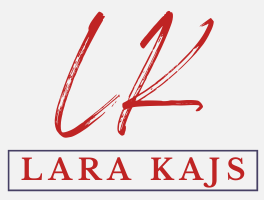29 November 2022 ~
Each year from 25 November to 10 December, women of the world unite (and some men too) for 16 Days of Advocacy and Activism against the most prevalent human rights violation in the world: violence committed against women and girls.
Fact: one in three women has experienced physical or sexual violence.
Fact: less than forty percent of women and girls who experience violence ever seek help, of any type. Instead, they suffer in silence.
Fact: you or someone you know has experienced physical or sexual violence.
So why is this still a problem? Why are women still being beaten into submission?
The UN Declaration on the Elimination of Violence Against Women offers the following definition: “The term violence against women means any act of gender-based violence that results in, or is likely to result in, physical, sexual or physiological harm or suffering to women, including threats of such acts, coercion or arbitrary deprivation of liberty, whether occurring in public or private life.”
Continuum of Violence and Abuse
Violence against women and girls is not exclusive to physical and sexual violence, but much broader and includes psychological, emotional, and financial abuse. Gender-based violence often involves a continuum of violence from psychological, emotional, and economic abuse through physical to sexual abuse. Any behavior that causes a woman to live in fear is unacceptable.
Physical violence includes being slapped, hit, punched, shoved, and pushed. It includes being hit with objects, being thrown downstairs or across a room, being kicked, having their arms twisted, being choked, being burnt, or being stabbed.
Psychological and emotional abuse includes a range of controlling behaviors including control of finances, isolation from family and friends, and repeated humiliation. It can also include threats against children or other family members or threats of injury or death.
Financial or economic abuse includes personal money or assets being forcibly controlled by another person. Economic abuse can also involve not being permitted to have a job or being excluded from any financial decisions.
Sexual violence can include rape and sexual assault with objects. It may also include enforced prostitution, being forced to watch, or engage in pornography, and being made to have sex with friends of the perpetrator.
Causes and Attitudes
Significant drivers of violence against women include the unequal distribution of power and resources between men and women, as well as adherence to severely defined gender roles and identities. Attitudes that tolerate violence play a central role in shaping the way individuals, and the global community as a whole, respond to violence against women.
These attitudes include justifying violence against women based on the idea that it is legitimate for a man to use violence as a method of control – or blaming the violence on a lack of self-control. Disinterest in the impact of violence, denying that it occurs, or denying that certain behaviors are violent at all, minimizes the seriousness of violence against women.
Similar attitudes may shift the blame for violence from the perpetrators to the female or hold women at least partially responsible for their abuse. All of which is unacceptable. Blaming the victim for their abuse is ridiculous.
Violence against women is preventable. The attitudes that perpetuate, rationalize, and normalize violence against women, need to be challenged. Men are overwhelmingly the perpetrators of gender-based violence. Shifting the behaviors is oftentimes difficult and a slow process, but gender equality means that we are all equal.
Reductions in violence against women can be achieved through advocacy and activism. It is vital to shine a spotlight on the issue of gender-based violence and to create public awareness about what needs to change to prevent it from recurring at local, national, regional, and international levels.
It is important to note that violence against women and girls has deepened as a result of increased conflict, crises, and global emergencies. At the same time, women’s rights organizations, human rights defenders, and advocates have also come under attack. In every country in the world, gender-based violence continues to happen at a disturbing rate.
16 Days Campaign
On 25 November 1960, the Mirabel sisters – Maria, Minerva, and Patria – actively opposed the systematic violence and malice of the Trujillo dictatorship in the Dominican Republic. All three sisters were beaten to death by Trujillo’s secret police and their bodies were dumped at the bottom of a ravine.
The Mirabel sisters became symbols of feminine resistance. In 1999, the UN formally recognized 25 November as the International Day for the Elimination of Violence Against Women and Girls. In 1991, the Centre for Women’s Global Leadership, with participants of the first Women’s Global Institute on Women, Violence and Human Rights called for 16 Days of Activism Against Gender-Based Violence.
November 25th is the International Day for the Elimination of Violence Against Women and the first day of 16 Days of Activism. Every year from 25 November to 10 December (World Human Rights Day) – people around the world unite to raise awareness about gender-based violence, challenge discriminatory attitudes, call for improved laws and services, and end violence against women and girls. 16 Days calls to end femicide (gender-related killing of women and girls). #ThinkingOutLoud #16Days #ViolenceAgainstWomen #MirabelSisters
With gratitude… Lara
Photo Credit: 16 Days of Activism for No Violence Against Women and Girls – by GovernmentZA. CC by 2.0


1 comment